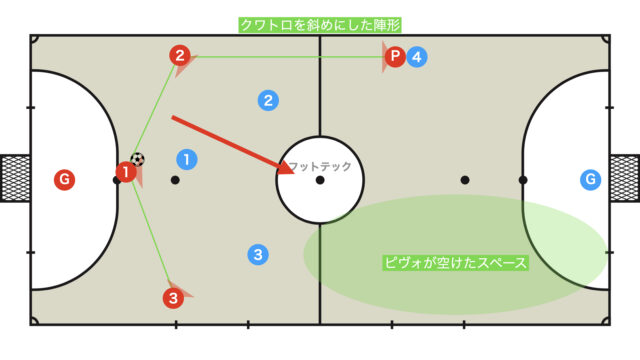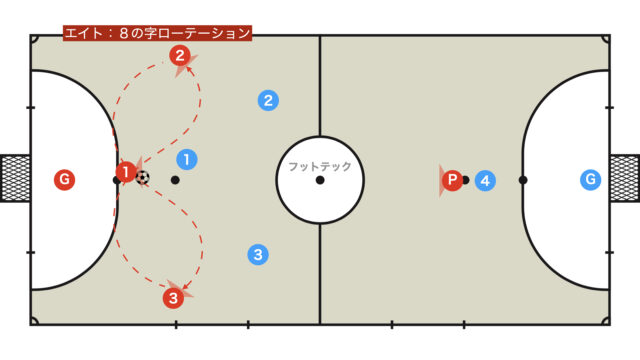Rotation (hedondo) is a highly effective method for constructing a multi-line defense, and it is a famous tactic frequently used even at the top level.
In this article, we will introduce a play model utilizing rotation as adopted by Fuchu Athletic FC.
Overview of Rotation and Its Tactical Intent
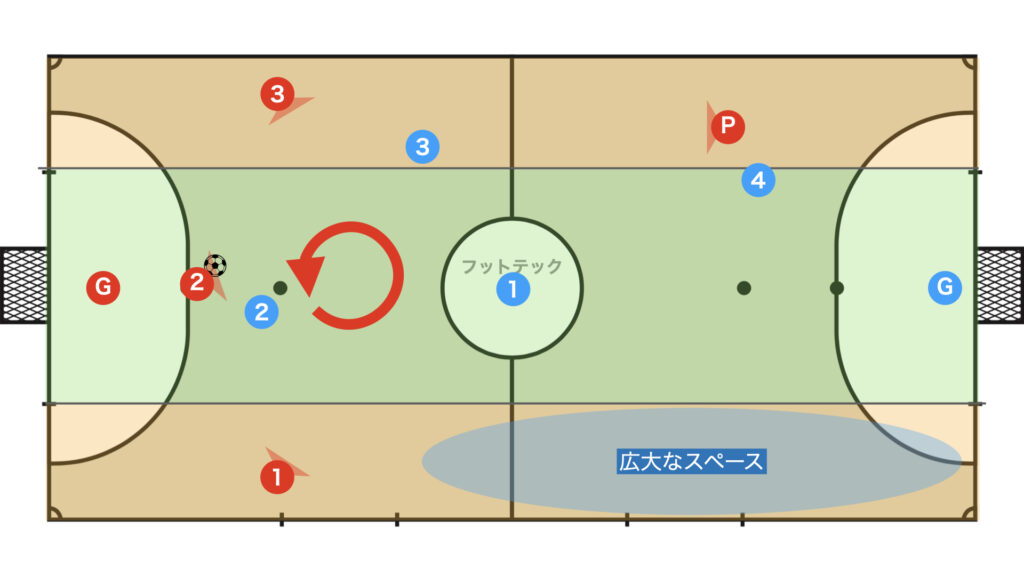
It is generally advisable for the pivo to receive the ball on the side opposite to their dominant foot, and in this case, we assume that the pivo is right-footed.
(If the pivo is left-footed, consider the mirror image.)
Thus, the rotation in this case will be counterclockwise; for a clockwise rotation in the opposite direction, please refer to the article below if you are interested.

- Utilizing the space between lines (entrelinarity)
- Exploiting the space created by the pivo (backdoor of opposite-side ala, Diagonal)
- Advancing and finishing via a pivo pass on the pivo’s side
Opening
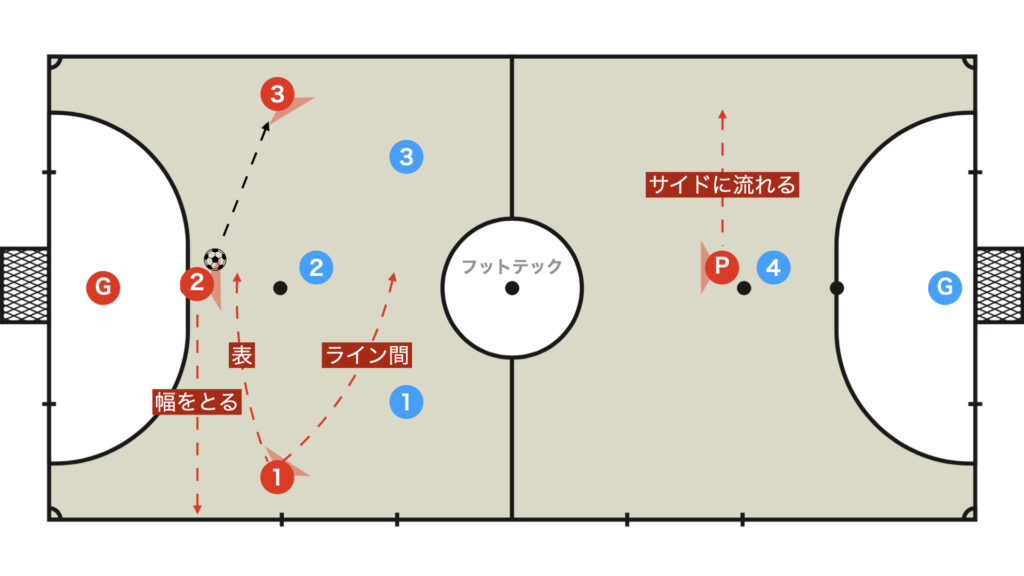
- The pivo drifts to the side
- The fixo occupies the width
- The opposite-side ala supports the ball holder from between the lines or the first row (front)
In this article, we will omit the tactic of creating a 3 on line formation on the first row using the front side.
Pivo Pass
Right-Angle Pivo Pass from the Side
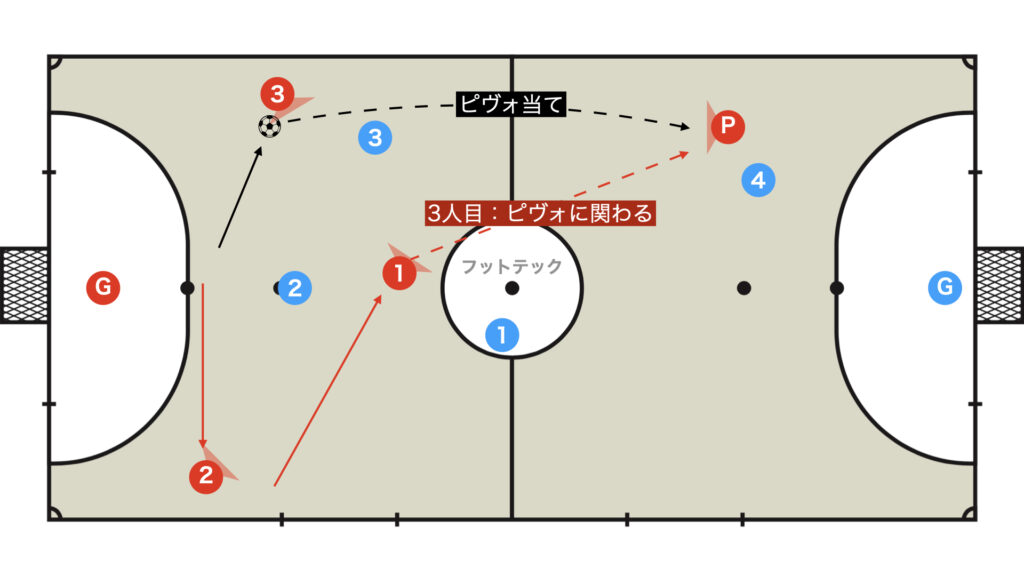
If the 1st DF’s press is lax, aim for a right-angle pivo pass.
After the pivo pass, the player positioned between the lines closest to the pivo becomes involved, leading directly to a finish.
Pivo Pass from Between the Lines
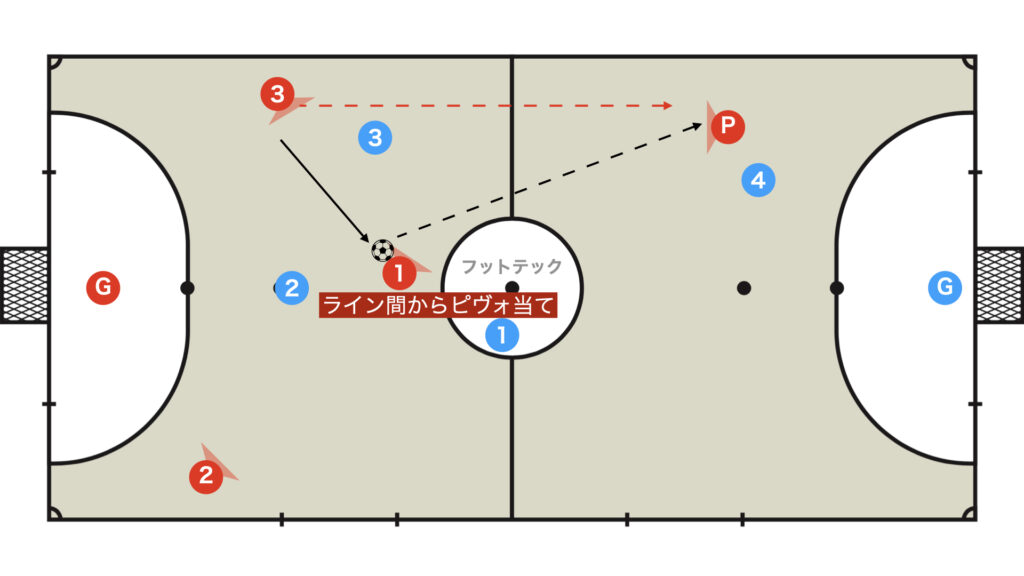
A pivo pass at an angle exceeding 90 degrees requires a bit of skill, yet a direct pivo pass is preferable.
Duo Relationship (Ala Between Lines)
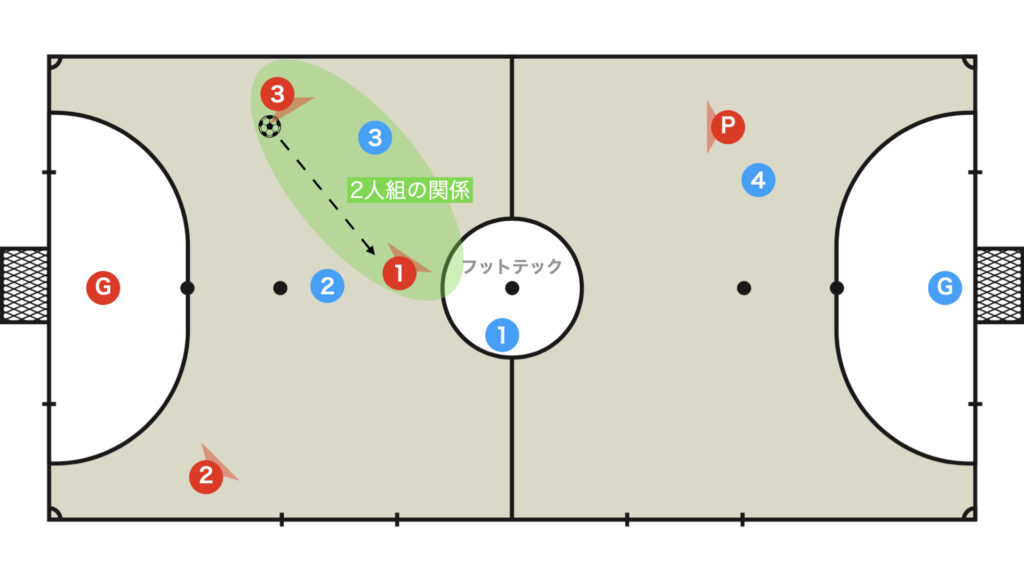
- One-two
- Parallera (mini paralla)
- Diagonal
- Non-advancing one-two → backdoor of opposite-side ala
- Turn between the lines → pass to opposite-side ala, etc.
In this article, we will explain one of the most representative breakdowns among these.
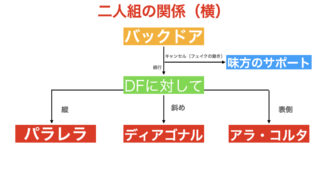
Diagonal from Between the Lines
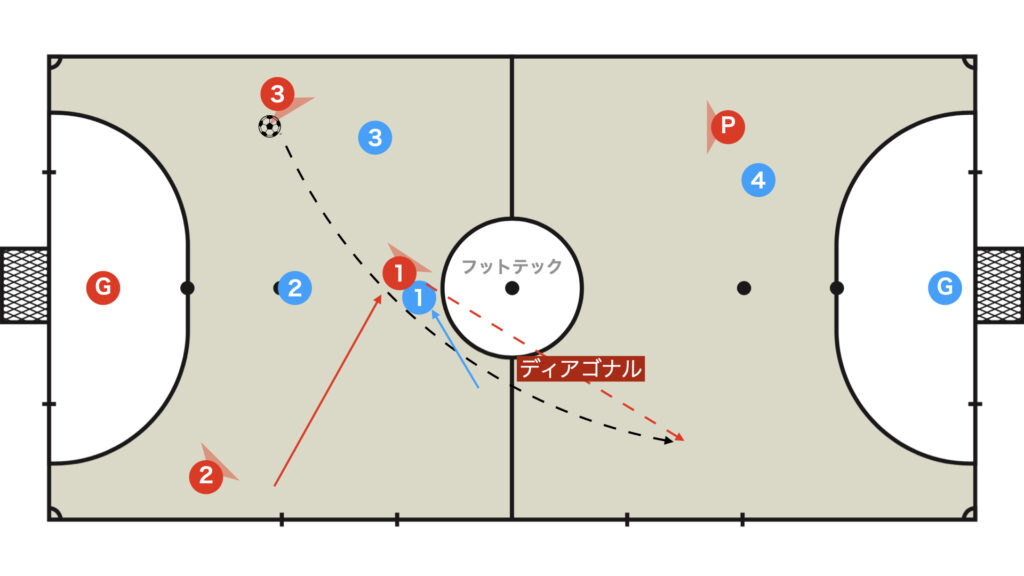
If a second-row player bites on the space between the lines, it is effective to quickly change direction and break away with a Diagonal run.
Please take a look at the goal below as an example.
Non-advancing One-Two
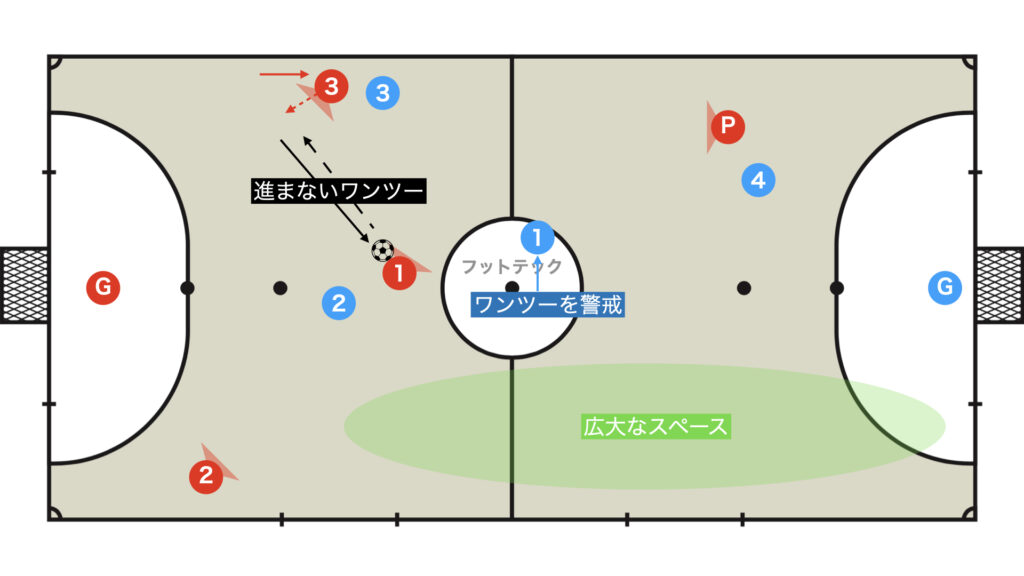
Performing a non-advancing one-two not only weakens the opponent’s press, but by drawing the 3rd DF (blue number 1) out, it also creates space on the opposite side.
Opposite-Side Ala Backdoor
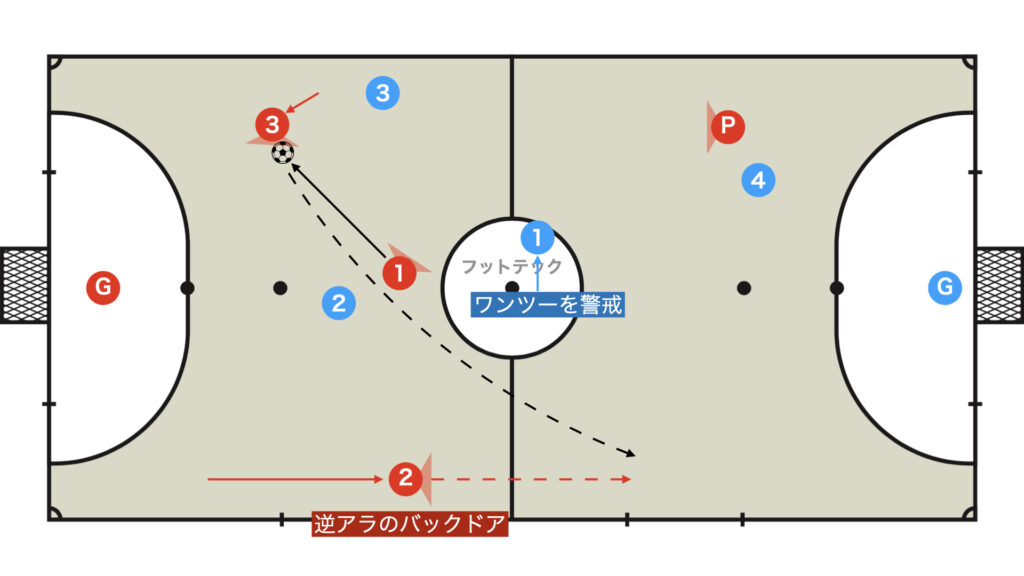
This sequence of off-ball runs is adopted by many teams as a sign play for kick-ins from their own half.
Expand to the Opposite Side → Return to Formation
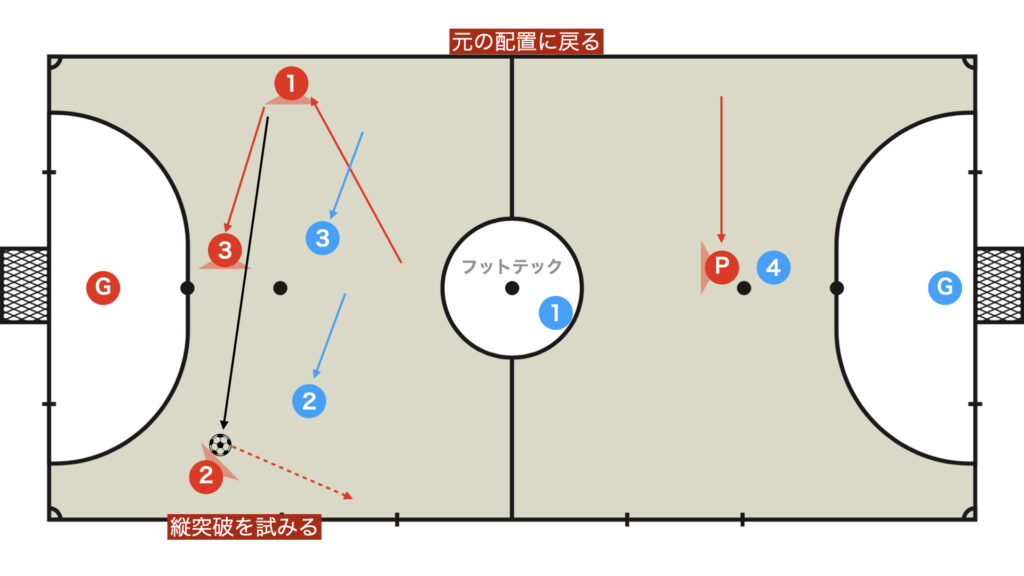
If the side with the pivo cannot be broken down, expand to the opposite side and return to the original formation.
Duo Relationship (Ala Maneuvering)
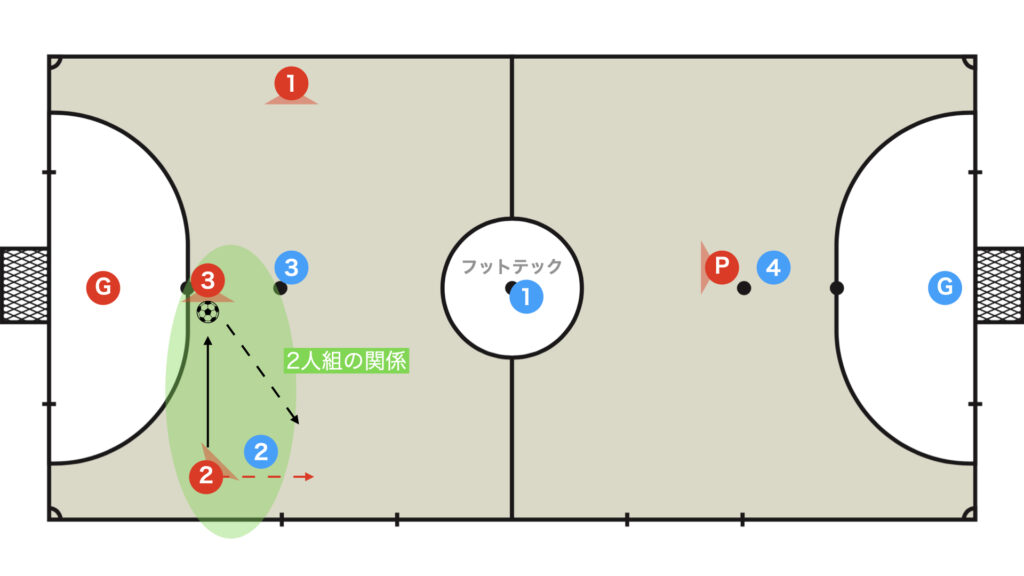
If the fixo is not under press, it is effective for the ala to go behind the opponent and engage in maneuvering.
- Backdoor
- Ala Corta
- Mini Diagonal
- Middle drive, etc.
In this article, we will only explain Ala Corta among these.
For those interested in further details, please read the article below.
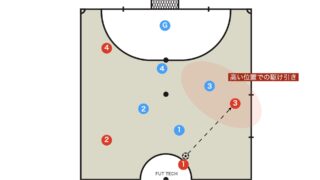
Utilizing Ala Corta
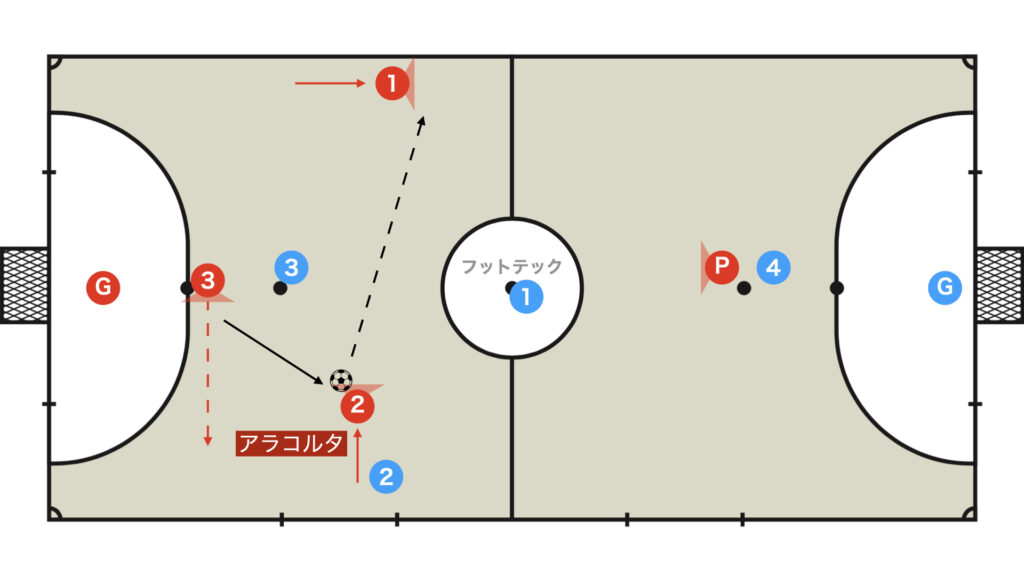
After the ala receives the ball via Ala Corta, the following methods are effective:
- Dribble forward → 3 vs 2
- Expand to the opposite side
- Pivo pass
If Ala Corta Cannot Be Executed → Pass to the Opposite Side and Rotate
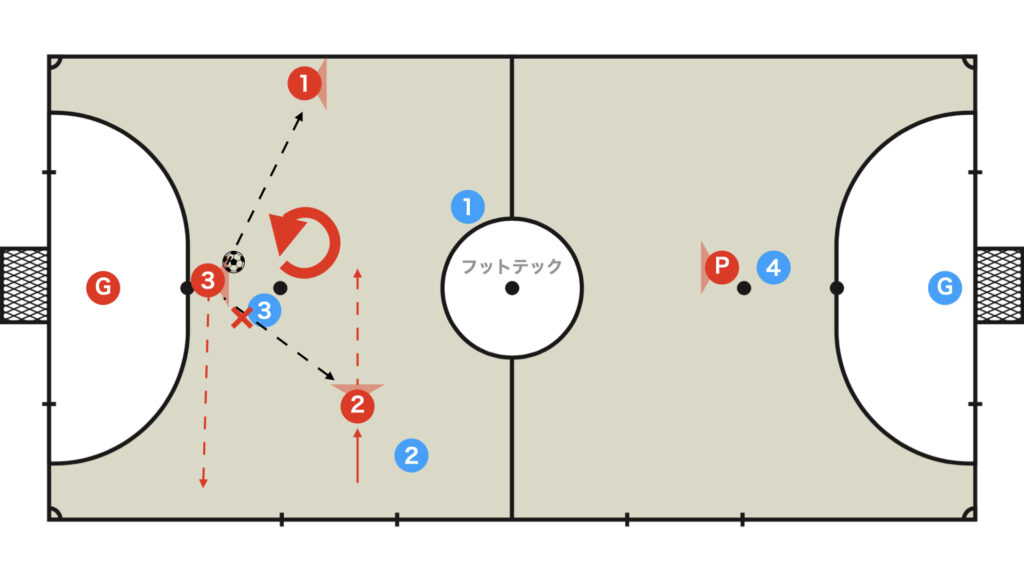
If the ala approaches the ball via Ala Corta but cannot execute a pass, then pass to the opposite side and continue rotating.
A player who breaks on the front side during Ala Corta can quickly support the ball holder, thereby creating a momentary numerical advantage.
Thank you very much for reading this article to the end.
If you found this article useful, please consider sharing it using the social media share buttons above.
We regularly share valuable insights on futsal tactics on Twitter, so if you haven’t followed us yet, we’d appreciate your support!
We are committed to raising the level of futsal in Japan by sharing high-quality information through discussions with individuals who have coaching experience in the F.League and overseas.
If you have any questions or notice any mistakes, feel free to leave a comment below.
We update our articles regularly, so if you’d like to keep reading, please bookmark our site or search for “FutTech”!
